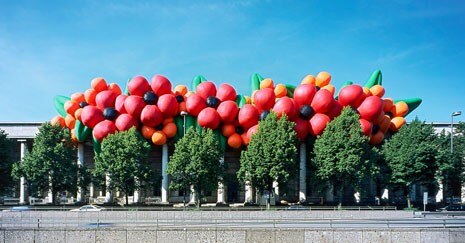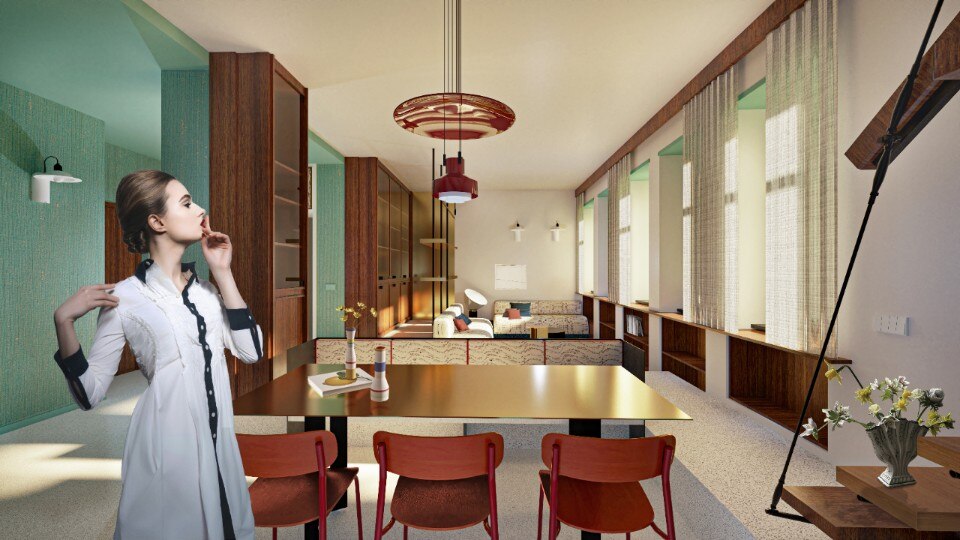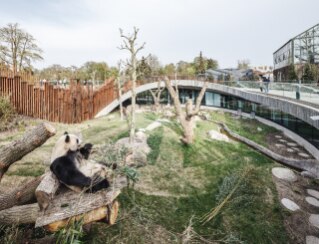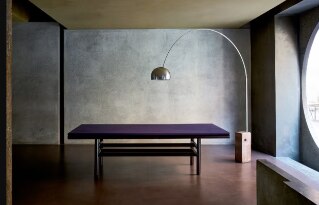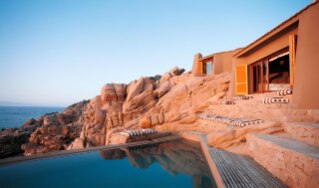A major exhibition in 2007 to fuel the debate concerning the future of the Haus der Kunst and place it at the top of the agenda. This is the aim of the ambitious project launched by director Chris Dercon in the run up to the seventieth anniversary of the monumental and controversial building commissioned by Hitler in 1937 for Munich, the future cultural capital of the Third Reich. Events start in mid March with the opening of the spaces redesigned by Konstantin Grcic and, later, with flexible curtains conceived by Petra Blaisse. This will be followed by a limited competition. Possible names include Adjaye, Braunfels, Chipperfield, Domenig, Hadid, Herzog & de Meuron, Hirsch, Koolhaas, Kuhn Malvezzi…
What is the history behind the Haus der Kunst?
It is a long story… 2007 will be the seventieth anniversary of the Haus der Kunst which opened in October 1937 with Hitler making a speech at the opening ceremony. The architect was Paul Ludwig Troost, a ship building engineer and specialist in building ocean liners. He was the architect and engineer and was assisted by his wife, an interior designer. The interesting thing about this building is that is was commissioned by the Nazi party in Munich in the 1930s because Hitler decided he wanted to make Munich the cultural capital of the Third Reich. Hitler liked being in Munich because it was near to where he came from and here he was immediately accepted not just for his political visions but also for his artistic visions. In Munich he wanted to build something along the lines of the museum mile and the first building he commissioned was a Kunsthalle, the Haus der Kunst. The building opened in October but was very rushed.
You have been director of the Haus der Kunst since 2003, what action have you taken since then and what state is the museum in at the moment?
During the first month I was here, the first thing I asked to do was a kind of feasibility study or technical survey to find out what condition the building was in. I found that it was in very poor condition, not only for technical reasons but because for years there has been a lot of debate in Munich as to how to address the Nazi past. There are many monuments in the city that refer to the Nazi period but Munich has always been a bit hypocritical in addressing these issues. Munich was not just the capital of the Third Reich, it was also the capital of the “Verdrängung”; meaning the capital of trying to eliminate the past. The way Munich was restored was also quite unique for Germany, it was almost the only city where it was decided to completely restore it, bring it back to how it was before the war in an almost detailed way. So that made the city kind of unique. In the meantime we have asked architects like Herzog & de Meuron and Rem Koolhaas to reflect about this kind of “imperfect perfection.” So we have been thinking about this building and its past because one of the first changes after World War II was in the 1950s when the Ministry of Culture called for a programme of normalisation.
Did they want to make it more functional?
No, not more functional, they wanted to get rid of the Nazi symbols. Interestingly enough what they did with the Haus der Kunst was they painted almost the whole building white inside, including the marble: they literally painted over the marble, painted over the swastika. The city also planted trees at the back of the building to diminish the view of the building. For me this was a kind of second time camouflaging of the city. This time not camouflaging against eventual bombing from the allies but camouflaging against the past. Then in the 1970s and 1980s people started saying “What are we going to do with this building.” Stephan Braunfels, who has designed parliamentary buildings in Berlin and the Pinakothek der Moderne had what I think was a very original idea, to blow up the building, to destroy it. I think it was the most radical proposal but there was no real serious proposal at all. Now it is time to think about what we want from this building because it is in such bad condition. Also we have the Pinakothek der Moderne, we have a kind of Museum quarter. The first thing I did after the technical survey was I wanted to get rid of the additions made as a result of the programme of normalisation in the 1950s. Now we are kind of ready, the building has almost been stripped down, you can see the structure much better and get a better feel for the spaces. We got rid of everything and in the meantime worked with Konstantin Grcic to create the furniture. When we came here we started a series of installations, like Paul McCarthy’s installation with inflatable flowers on the roof, that’s the kind of installation we like. Herzog & de Meuron will create something for the roof, this summer, at the occasion of the World Soccer Championship. Dealing with this building you can be humorous but you have to be precise. You have to be distant and at the same time you have to face the fact that this building is what it is.
Will the projects by Grcic and Blaisse be the start of a series of changes for the museum?
Yes, the first retrospective opens on March 15. The exhibition is called “Konstantin Grcic industrial design. On/off.” Off are all the spaces he has changed so far, the foyer, the furniture and the arrangement of the cafee and the bookshop. Now we are going to ask ourselves, ask politicians what to do, we know that this building is probably not going to be here anymore in 40 or 50 years time if we don’t do something about it. Like the Pergamon in Berlin, many European buildings constructed in the 1920s and 1930s are in a bad way (the concrete iand cement are in bad shape, the metal roofing as well). The first thing we are going to ask everybody is “Do we still want this building? Or do we follow Stephan Braunfels’s idea?” The second question is “If we all decide that we do want it, what do we need to repair and how?” The third question is then, if we want to repair it and how does it mean that we keep the morphology as it is or are we going to change it? If we decide to demolish it because it is in such a bad way, are we going to do something else here because it is one of the key landmarks in the city of Munich. We want to put forward these questions in a way that is carefully formulated, precise and we are still working on them. We want to ask these questions first to the politicians and the population but also to architects and designers. In October 2007 we will show the architects’ proposals. For this to work we have to ask both young (like Kuhn Malvezzi and Nikolaus Hirsch) and older German architects. We also have to choose architects who know and like the building, architects that we like, we will definitely ask German architects who are very pronounced on this kind of thing (like Stephan Braunfels and Günther Domenig, who did the Nürnberg Centre of Documentation); and architects who are used to think about new arts infrastructure (David Adjaye comes to mind for example). We always forget that the Haus der Kunst had a very interesting architectural programme after World War II. The first exhibition on Frank Lloyd Wright in Europe after the war was held at the Haus der Kunst. One of the first big exhibitions on Le Corbusier was held here in 1953. We have also been working with architects like Rem Koolhaas who is giving the lecture on Konstantin Grcic on March 15. We have been and will be working with Herzog & de Meuron and are showing their exhibition “no.250” in May for the World Soccer Cup. We had Zaha Hadid, Yona Friedman, Hans Hollein as speakers. So they know the building and our ideas as well.
Would it be possible to change the meaning of this symbol?
No the meaning cannot be changed. This building isn’t quite Nazi architecture but it is a Nazi building. It is internationalist, neoclassical in style, with a clear Nazi programme. It is not quite Speer. Speer was asked to design a museum of architecture and applied art in the form of the Haus der Kunst. Built by Troost, who had to come up with things he had never built, he looked at all the books he could find on museum architecture I suppose and looked very carefully at Schinkel and Mies as well. This building has amazing qualities inside though. The transparency of the spaces, it is incredibly popular with the artists who work with it. Are we going to make a kind of memorial cum documentation centre heavy on symbols like Peter Zumthor proposed for Berlin (his project got cancelled, too much debate)? Or are we going to make something like the panoramic additions, having the building operate as a ruin that Günther Domenig did in Nürnberg. Or do we want to explode it and destroy it, like Stephan Braunfels suggested. We always forget the Haus der Kunst, it’s near the ceremonial palaces hosting Mussolini and later Strauss and the Parliament of Bayern. It is a key place and it also has one of the biggest inner city parks in Germany, the Englische Garten, at the back and one of the most popular discotheques P1.
What stage is the project at?
We are starting to approach architects but first we still want to formulate the questions quite carefully that we want to ask them. The list has not been defined yet. We wanted to have a group of let’s say fifteen and give them some serious money to develop ideas that can be shown in October 2007 here at the Haus der Kunst. At the same time, Lawrence Weiner will put a piece of writing on the roof of the Haus der Kunst that I like very much, it will be huge: “As long as it lasts”. And that will be also the title of the competition.
Are you also going to carry out a survey amongst the population?
We will use the promotional phase of the competition to launch the debate amongst the population of Munich. We don’t want to hear just from the so called international star architects because that would limit the discussion.
At the end of the competition will there be a winning proposal? Are you going to realise one of these projects?
Maybe yes, maybe not. Maybe the politicians in Bayern will finally get so excited that we can start a building programme. The competition is to first create the discussion, to see what might be possible and I hope that there will be three or four realistic proposals that could be eventually used, that could be worked on. It’s a kind of feasibility study, we have to ask questions that are precise but at the same time be as open as possible. My wish list is David Adjaye, Olafur Aliasson, Vito Acconci, Herzog & de Meuron, Zaha Hadid (because she missed the chance to do a museum here in Munich), Rem Koolhaas, Kuhn Malvezzi, Allman Sattler & Wappner, Uwe Kiesler, Stephan Braunfels, David Chipperfield, Günther Domenig, Yona Friedman, Hans Hollein, Nikolaus Hirsch. We will only approach some of them though, these are the architects whose opinions I would like to hear.
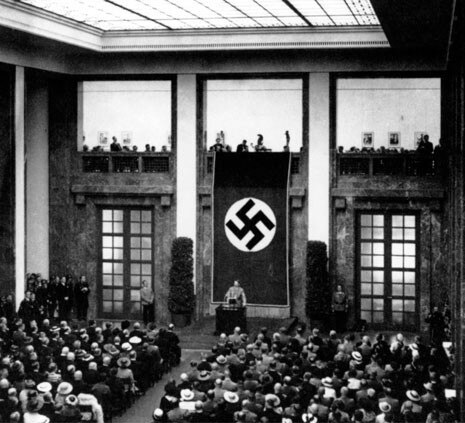
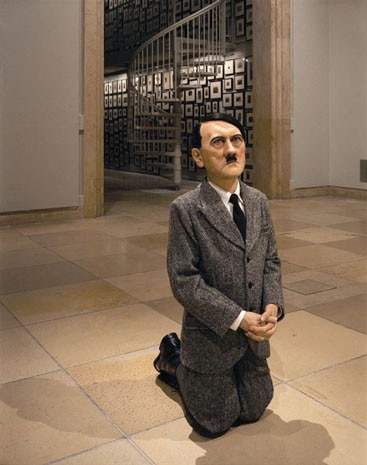
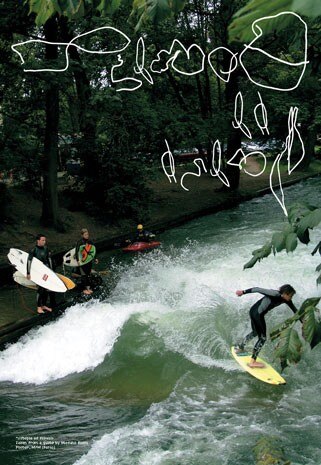
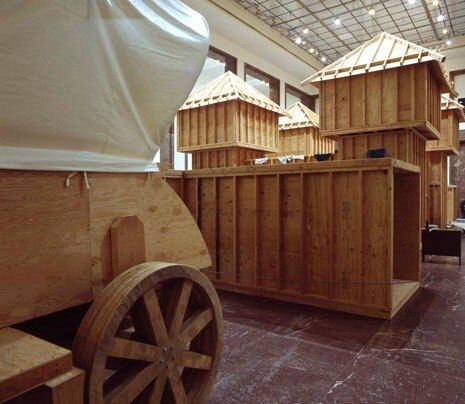
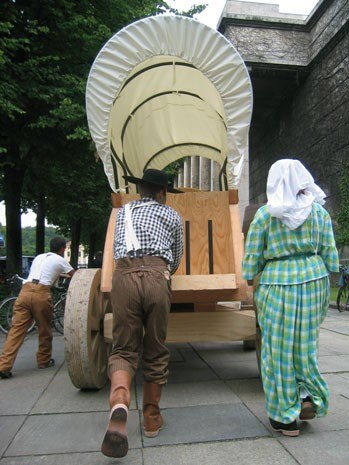

Marble matters– exploring Carrara’s legacy
Sixteen young international architects took part in two intensive training days in Carrara, organized by FUM Academy and YACademy, featuring visits to the marble quarries and a design workshop focused on the use of the material.


